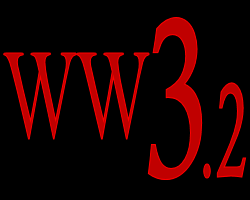World War III.2 - Comparing World Wars
 The first two world wars were a long time ago. Horses were still a significant factor in transportation, but there were no personal computers.
The first two world wars were a long time ago. Horses were still a significant factor in transportation, but there were no personal computers.
U.S. weekly newsmagazine Time declared in its September 11, 1939, edition, “World War II began last week at 5:20 a.m. (Polish time) Friday, September 1 ...." Time magazine’s early reference to World War II — World War I was known simply as the World War or the Great War until the bloody sequel — prompted U.S. President Franklin Roosevelt to begin using the term, although the government did not officially adopt that name for the six-year conflict until September 1945, a month after the Japanese surrendered.
World Wars are defined by their broad scope and by the sheer number of countries involved. The Great War [aka World War I] (1914-1918) and World War II (1939-1945) were two of the most important events in human history. It was only in 1939 that “The Great War” was seen not the “War to End All Wars” but simply the First World War, and history began numbering them. In both the world wars, there were millions of casualties and the outcomes were disastrous. The first two World Wars were in some ways similar but also, different. The World Wars had similarities in the way the wars were caused, how the wars ended, in regards to who lost, and propaganda. But warfare methods were altered in regards of weapon technogy and combat tactics. World War 1 was a war between armies, and the majority of the casualties were in the armed forces. World War 2 was a war between people, and most of the dead were civilians. Poison gas was used in the Great War but not in World Wr II, which saw the first and only combat use of nuclear weapons. Each war was horrible.
There were a few wars before WWI that had a higher death toll overall, most of them came from China. But total body count cannot be a measure of the importance ranking of a war, since in the first two World Wars the high death rate was due in no small measure to military incompetence.
The cold figures of the output of airplanes, tanks, guns, naval ships, and ammunition, particularly when they are reduced to the still colder form of indices of aggregate munitions production of the major belligerents, probably tell the story of the first two World Wars as well as extended discussion or elaborate pictures. The historian Niall Ferguson gave noted the overwhelming size advantage of the Allies in population and production on the eve of World War I. “To the economic historian, the outcome of the First World War looks to have been inevitable from the moment [the British] opted for intervention.” He argued the war should have been over quickly, and the explanation for the Allied failure to conclude the war much sooner was Allied mismanagement. Ferguson concluded that the Allied economic preponderance was “an advantage squandered.”
On 02 March 2022, a total of 141 countries voted in favor of a UN resolution deploring Russia’s invasion of Ukraine. Looking beyond that one vote, two-thirds of the world’s population live in neutral or Russia-leaning countries. Only 36% of the world’s population live in countries that have actively condemned Russia and imposed sanctions on the Russian economy. At least 32% of the world’s population lives in a country where the government had supported Russia’s actions or where official declarations echoed Russia’s narrative. The West-supporting camp represented about 70% of global GDP. By contrast, the neutral and Russia-friendly blocs concentrate only around 30% of global GDP. Truly Kremlin-aligned countries are an exclusive club including the likes of North Korea, Syria, and Cuba, and they have just 3.9% of the world’s population and 2.6% of its GDP.
Central Allied Powers Powers 1914 countries 4 6+22 1914 GDP [1990$ billion] 377 1093 1914 population (millions) 115 266 1914 population, empire (millions) 143 806 1914 Land forces (millions) 2.3 3.2 1919 battle deaths (millions) 4.0 5.7 1919 horses (millions) 2.0 8.0 1919 front line trenches [km] 1000 1000 1919 Weapons, aircraft [,000] 47.3 124.5 1919 Weapons, tanks 100 8919 1945 countries 8 3+44 1938 GDP [1990$ billion] 751 1024 1938 population (millions) 260 690 1945 armored vehicles [,000] 51 216 1945 aircraft [,000] 144 370 1945 horses (millions) 2.8 3.5 1945 ballistic missiles 6000 0 1945 atomic bombs 0 4 2022 countries 6 50 2022 GDP [2022$ T] $2.5 $48.5 2022 population (millions) 255 1200 2022 front line trenches [km] 1000 1000 2022 horses 0 0
The Allied Powers of World War I included some of the most powerful nations at the time, including France, Russia, and the United Kingdom. During World War I, the term ‘Allied and Associated Powers’ applied to the 28 States who were opposed to the Central Powers of Germany, Austria-Hungary, the Ottoman Empire, and Bulgaria. In World War II, the three great Allied powers—Great Britain, the United States, and the Soviet Union—formed a Grand Alliance. Fifteen other independent states signed the Declaration by United Nations on January 1, 1942. In addition, the Declaration was signed by the governments-in-exile of another eight states that were occupied by the Axis powers at the time. Twenty-one other states declared war on Germany and signed the Declaration by March 1945. The three principal partners in the Axis alliance were Germany, Italy, and Japan. Five other European states joined the Axis alliance during World War II.
|
NEWSLETTER
|
| Join the GlobalSecurity.org mailing list |
|
|
|

